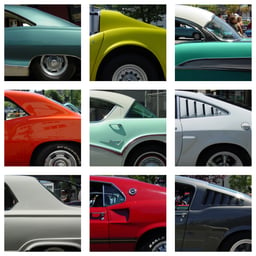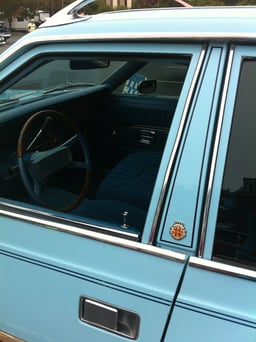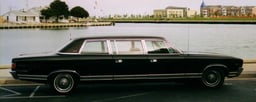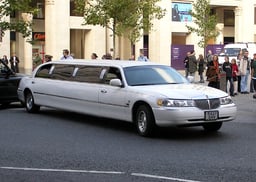Pillar (car)
-stgSGMO8OixD10zEaBzFkgEfkkE7sH)
Pillar (car)
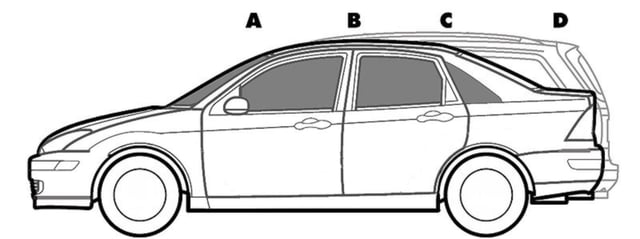
Typical pillar configurations of a sedan (three box) and station wagon (two box) from the same model range.

Diagram of a five-door hatchback (two-box) superimposed over the station wagon (two-box) from the same model range—in this case, both with a D-pillar.
Pillars are the vertical or near vertical supports of a car's window area or greenhouse—designated respectively as the A, B, C or (in larger cars) D-pillar, moving from front to rear, in profile view.
The consistent alphabetical designation of a car's pillars provides a common reference for design discussion and critical communication. As an example, rescue teams employ pillar nomenclature to facilitate communication when cutting wrecked vehicles, as when using the jaws of life.[1]
Design
In the case of the B (or center) pillar on four-door sedans, the pillar is typically a closed steel structure welded at the bottom to the car's rocker panel and floorpan, as well as on the top to the roof rail or panel.[5] This pillar provides structural support for the vehicle's roof panel and is designed for latching the front door and mounting the hinges for the rear doors.[5]
As the most costly body components to develop or re-tool, a vehicle's roof and door design are a major factor in meeting safety and crash standards.[6] Some designs employ slimmer, chamfered windscreen pillars, A pillars, to help improve driver vision (thus reducing blind spots) through the use of stronger alloy steel in these components.[6] As "perhaps the most complex of all the structures on the vehicle", the center or B-pillar may be a multi-layered assembly of various lengths and strengths.[7]
Closed vehicles without a B-pillar are widely called hardtops and have been available in two or four-door body styles, in sedans, coupes and wagons.[8] Designs without a center or "B" pillar for roof support behind the front doors offer increased occupant visibility, while in turn requiring underbody strengthening to maintain structural rigidity.[9] In the early 1970s, General Motors broadened their definition of "hardtop" to include models with a B-pillar although: "up to then, everybody thought a hardtop was a car without a center pillar."[10]
Pillars are implied, whether they exist or not; where a design's greenhouse features a break between windows or doors without vertical support at that position, the non-existent pillar is "skipped" when naming the other pillars. Thus a two-door hardtop or a three box designed coupé could have its rearmost pillar called the C-pillar even in the absence of a B-pillar. Conversely additional doors, such as on limousines, will create additional B-pillars; the B-pillars are then numbered, B1, B2, and so forth.
In addition to the pillar nomenclature derived from viewing an automobile in profile, some older cars have a two-part windshield or a split rear window, with the two halves separated by a pillar. Posts for quarter windows (a smaller window typically between the front window and the windshield) are not considered a named pillar.
See also
Automobile design
Automotive head-up display
Blind spot (automobile)
Driver visibility
Quarter glass
